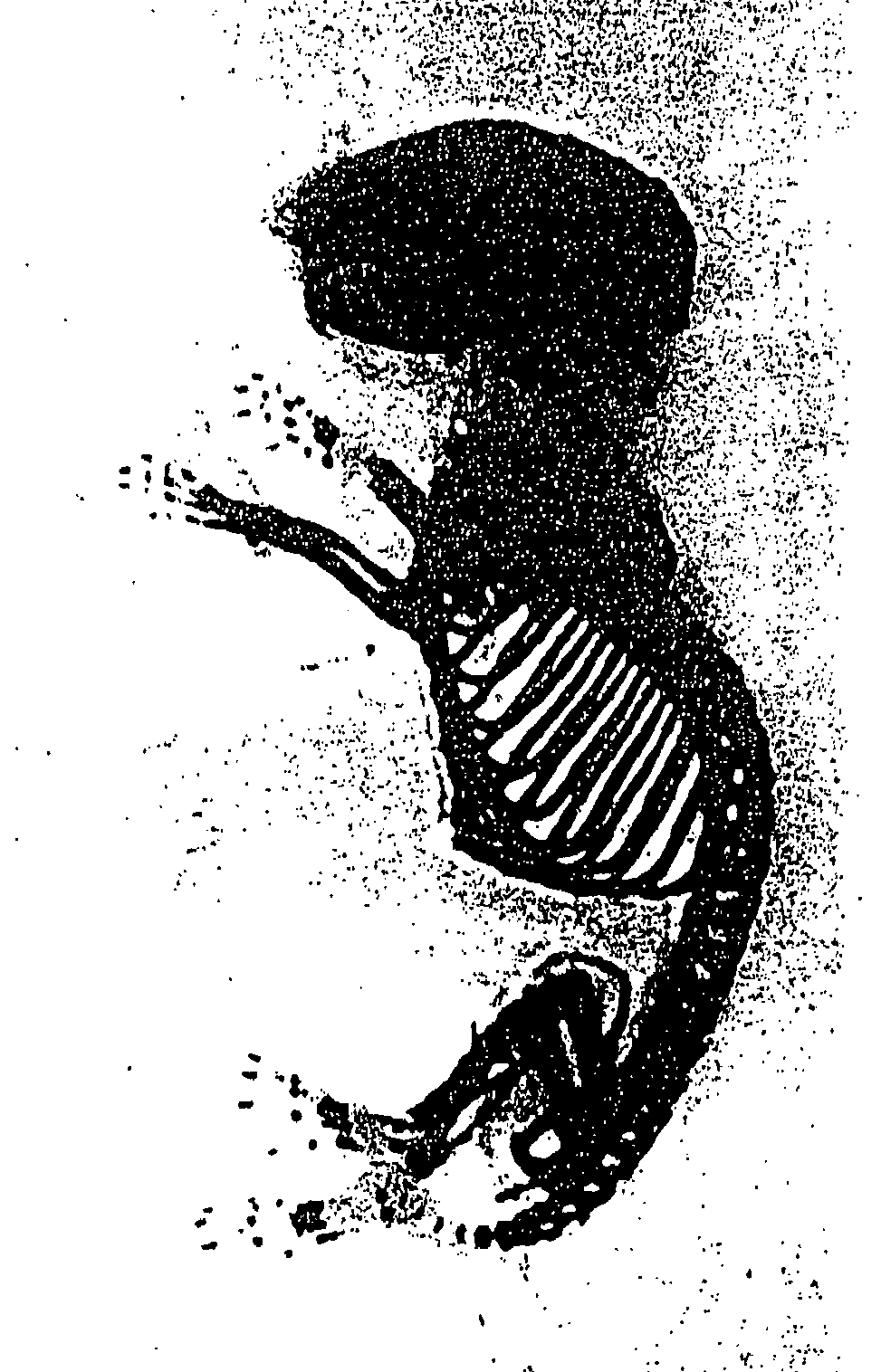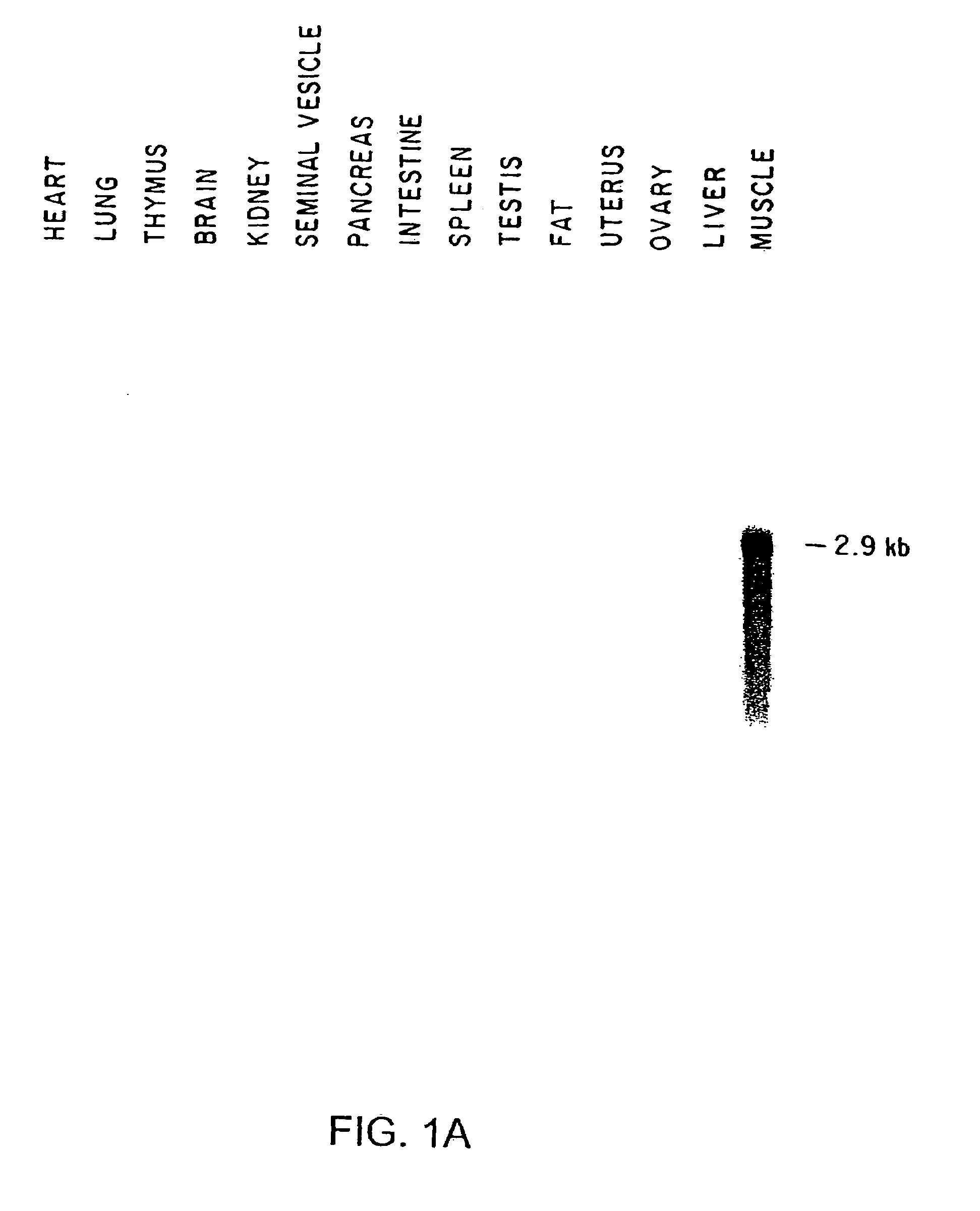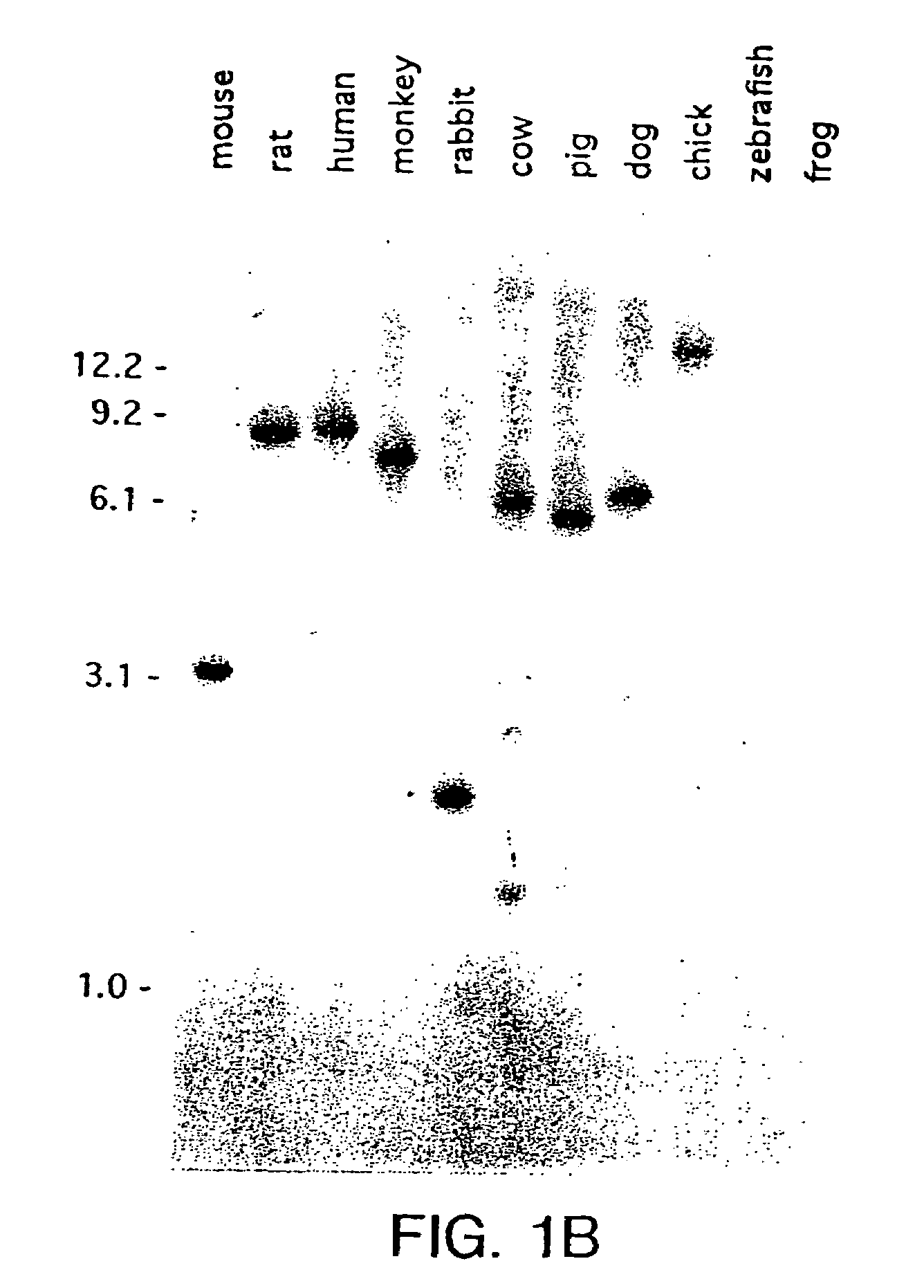Growth Differentiation Factor-8
a growth differentiation factor and growth factor technology, applied in the field of growth factors, can solve the problems of limited success in the preparation of animal foodstuffs
- Summary
- Abstract
- Description
- Claims
- Application Information
AI Technical Summary
Benefits of technology
Problems solved by technology
Method used
Image
Examples
example 1
Identification and Isolation of a Novel TGF-β Family Member
[0137]To identify a new member of the TGF-β superfamily, degenerate oligonucleotides were designed which corresponded to two conserved regions among the known family members: one region spanning the two tryptophan residues conserved in all family members except MIS and the other region spanning the invariant cysteine residues near the C-terminus. These primers were used for polymerase chain reactions on mouse genomic DNA followed by subcloning the PCR products using restriction sites placed at the 5′ ends of the primers, picking individual E. coli colonies carrying these subcloned inserts, and using a combination of random sequencing and hybridization analysis to eliminate known members of the superfamily.
[0138]GDF-8 was identified from a mixture of PCR products obtained with the primers
(SEQ ID NO: 1)SJL141:5′-CCGGAATTCGGITGG(G / C / A)A(G / A / T / C)(A / G)A(T / C)TGG(A / G)TI(A / G)TI(T / G)CICC-3′;(SEQ ID NO: 2)SJL147:5′-CCGGAATTC(G / A)CAI(G...
example 2
Expression Pattern and Sequence of GDF-8
[0144]To determine the expression pattern of GDF-8, RNA samples prepared from a variety of adult tissues were screened by Northern analysis. RNA isolation and northern blot analysis were carried out as described previously (Lee., Mol. Endocrinol., 4:1034, 1990) except that hybridization was carried out in 5×SSPE, 10% dextran sulfate, 50% formamide, 1% SDS, 200 Tg / ml salmon DNA, and 0.1% each of bovine serum albumin, ficoll, and polyvinylpyrrolidone. Five micrograms of twice poly A-selected RNA prepared from each tissue (except for muscle, for which only 2 Tg RNA was used) were electrophoresed on formaldehyde gels, blotted, and probed with GDF-8. As shown in FIG. 1, the GDF-8 probe detected a single mRNA species expressed at highest levels in muscle and at significantly lower levels in adipose tissue.
[0145]To obtain a larger segment of the GDF-8 gene, a mouse genomic library was screened with a probe derived from the GDF-8 PCR product. The part...
example 3
Isolation of cDNA Clones Encoding Murine and Human GDF-8
[0149]In order to isolate full-length cDNA clones encoding murine and human GDF-8, cDNA libraries were prepared in the lambda ZAP II vector (Stratagene) using RNA prepared from skeletal muscle. From 5 Tg of twice poly A-selected RNA prepared from murine and human muscle, cDNA libraries consisting of 4.4 million and 1.9 million recombinant phage, respectively, were constructed according to the instructions provided by Stratagene. These libraries were screened without amplification. Library screening and characterization of cDNA inserts were carried out as described previously (Lee, Mol. Endocrinol., 4:1034-1040).
[0150]From 2.4×106 recombinant phage screened from the murine muscle cDNA library, greater than 280 positive phage were identified using a murine GDF-8 probe derived from a genomic clone, as described in Example 1. The entire nucleotide sequence of the longest cDNA insert analyzed is shown in FIGS. 5A and 5B and SEQ ID N...
PUM
| Property | Measurement | Unit |
|---|---|---|
| molecular weight | aaaaa | aaaaa |
| molecular weights | aaaaa | aaaaa |
| molecular weights | aaaaa | aaaaa |
Abstract
Description
Claims
Application Information
 Login to View More
Login to View More - R&D
- Intellectual Property
- Life Sciences
- Materials
- Tech Scout
- Unparalleled Data Quality
- Higher Quality Content
- 60% Fewer Hallucinations
Browse by: Latest US Patents, China's latest patents, Technical Efficacy Thesaurus, Application Domain, Technology Topic, Popular Technical Reports.
© 2025 PatSnap. All rights reserved.Legal|Privacy policy|Modern Slavery Act Transparency Statement|Sitemap|About US| Contact US: help@patsnap.com



